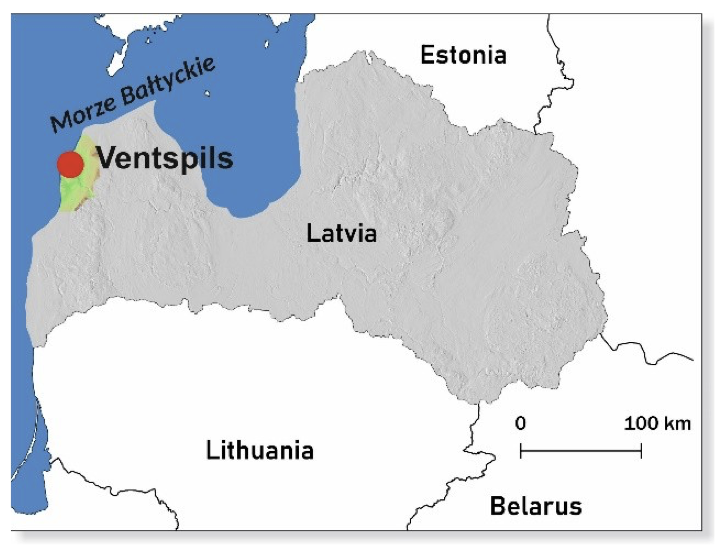Project Leader: Prof. Dr. Hab. Rajmund Przybylak
Lake and peat sediments have a high capacity for recording both natural changes and human activity, and when combined with nearshore clastic sediments, they constitute an excellent archive of climate and environmental changes. The Latvian coast is particularly sensitive to such changes, as it lies in the transition zone between oceanic and continental climates.
Our pilot studies in the area around the city of Ventspils (Fig. 1), which revealed extreme events approximately 2000, 500, and 250 years ago in clastic sediment profiles, prompted the decision to conduct higher-resolution research in this area using integrated paleoclimatic and paleoenvironmental methods.
The first primary objective of the proposed project is to reconstruct climate and environmental changes along the eastern Baltic coast over the last 2,000 years. The second research objective is to assess the causes of the observed climate and environmental changes in the study area, distinguishing between natural and anthropogenic factors.
To achieve the project goals, the latest research methods from historical climatology, dendroclimatology, geomorphology, geology, sedimentology, geochronology, and paleoenvironmental studies will be employed.
The first stage of work will include field studies and archival research, specifically:
- Sedimentological mapping and sampling of coastal littoral and aeolian sediment successions.
- Collection of lake and peat sediment cores.
- Sampling of living and subfossil tree trunks.
- Compilation of instrumental meteorological data, historical sources documenting extreme weather events (e.g., heatwaves, cold waves, heavy precipitation, and strong winds) and their consequences in the form of extreme phenomena (e.g., floods, droughts, storms, and fires), as well as information on changes in the natural environment and human impacts.

In the second stage of the project, the collected “raw” research materials (e.g., sediment and tree trunk cores, meteorological data, historical sources) will undergo detailed laboratory analysis (e.g., at the Environmental Analysis Laboratory, Luminescence Dating Laboratory, Dendrochronology Laboratory – all at UMK, and the Radiocarbon Dating Laboratory) as well as using methods applied in historical climatology and paleoenvironmental reconstructions.
The final outcome of the project will be the development of a quantitative model of the relationships between climate and environmental changes over the past 2,000 years (Fig. 2).

